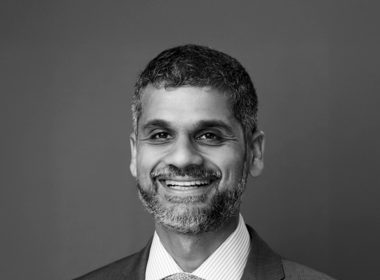When digital transformation makes headlines, it often looks flawless: streamlined dashboards, seamless cloud migrations, and data models that promise to anticipate every customer move. Behind the scenes, the reality is far less glamorous. Budgets swell, deadlines slip, and once-confident leadership teams are left explaining stalled rollouts.
Daniel J. Jacobs, a transformation advisor with more than 20 years of IT leadership experience, has seen it happen in industries from retail to logistics. “Most transformations don’t die because of technology. They die because the business is moving faster than the plan,” says Jacobs, whose experience leading IT strategies for multinational corporations, private equity backed firms, and mid-to-large enterprises has shown him a consistent flaw. Static, multi-year roadmaps collapse under pressure. “Digital strategy isn’t about building castles. It’s about surviving earthquakes,” he says. The companies that succeed are the ones treating transformation as a reflex, not a one-off campaign.
Why So Many Transformations Fail
The statistics are sobering. Research from MIT Sloan School of Management has found that nearly 70% of digital initiatives miss their strategic or financial targets. The fallout is predictable: projects overshoot budgets, leadership turnover accelerates, and competitors with more agile strategies move in to claim market share.
Jacobs points to high-profile examples. J.Crew’s mid-2010s push to reinvent itself digitally prioritised backend upgrades over customer experience. “Customers didn’t care how efficient the system was, they just wanted the site to load,” he says. Persistent website issues helped drive the brand into bankruptcy in 2020 with 1.7 billion dollars in debt. Nike’s early 2000s ERP overhaul tells a similar story. A 400 million dollar system went live without proper testing, triggering faulty demand forecasts that wiped out 100 million dollars in sales and sent stock prices tumbling nearly 20% in a single day. “Technology moved fast,” says Jacobs. “But the people and processes did not.”
What High Performers Are Doing Instead
Jacobs’ work aligns with MIT Sloan’s finding that shorter transformation cycles consistently outperform long-range planning. The winners, he says, are shifting from rigid roadmaps to 90 day value delivery sprints. Walmart is one example. In 2022, the retailer used a 90 day sprint to cut grocery pickup times in half. The improvement did not come from new infrastructure. It came from process optimisation. Online sales rose 27% and regional delivery cycles improved by 35%. “They did not just launch tech. They removed friction fast.”
DHL’s pandemic pivot offers another lesson. The company trained 10,000 employees in AI analytics, rolled out modular IoT and blockchain upgrades, and cut delivery times by 30% while reducing operational costs by 15%. “They did not wait for a perfect system. They built one move at a time and kept moving,” says Jacobs.
The Four Reflexes Behind Transformation That Works
Through his IT Catalyst Framework, Jacobs distills transformation success into four capabilities:
1. Process Before Technology – Redesign workflows before writing a single line of code.
2. People Powered Change – Technology fails if teams are not aligned and engaged.
3. Composable Architecture – Modular, adaptable tools outperform monolithic systems in volatile markets.
4. Short Cycle Value Delivery – Deliver visible progress in 90 days to keep momentum and stakeholder confidence.
“If your ERP, CRM, or AI tool cannot show progress in a quarter, you are not transforming. You are just spending,” he says.
For Leaders, Static Plans Are a Liability
Executives need to rethink their role in transformation. Static roadmaps, Jacobs says, create blind spots, while agile competitors win through speed. “Customer friction is the best starting point,” he advises. “Target pain, not platforms.” His benchmark for success is clear: if a digital investment is not delivering business value in 90 days, stop and reframe. Transformation must be treated as an ongoing operating capability, not a single project.
Start Small, Win Fast, Repeat
The organisations thriving in 2025 are not the ones launching grand multi-year campaigns. They are scanning for bottlenecks, acting quickly, and building trust through visible, short-term wins. “Transformation will not wait for you to get comfortable,” Jacobs says. “But it will reward you if you get moving.” His advice is simple: find a high friction, high margin process, deliver one tangible improvement in 90 days, and repeat. In the race to stay relevant, Jacobs believes one truth will remain constant: reflexes will beat roadmaps every time.
Connect with Daniel J. Jacobs on LinkedIn or visit his website for more insights.











